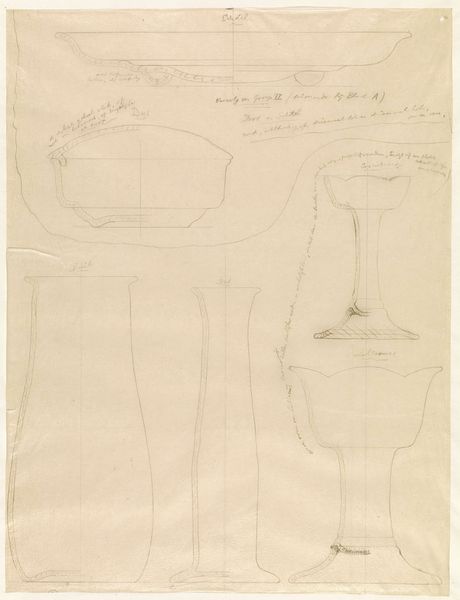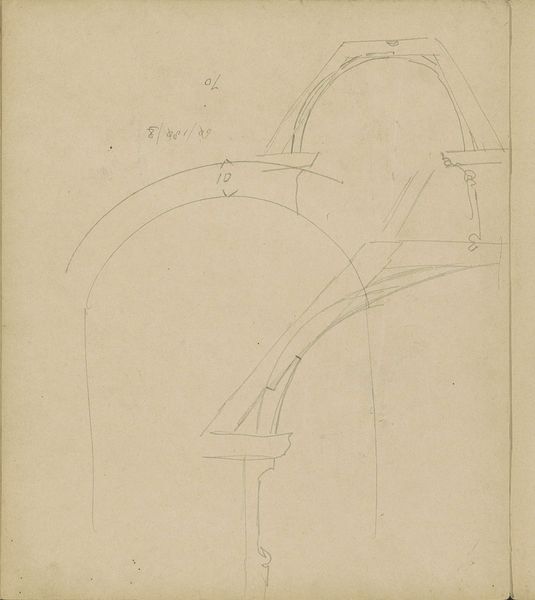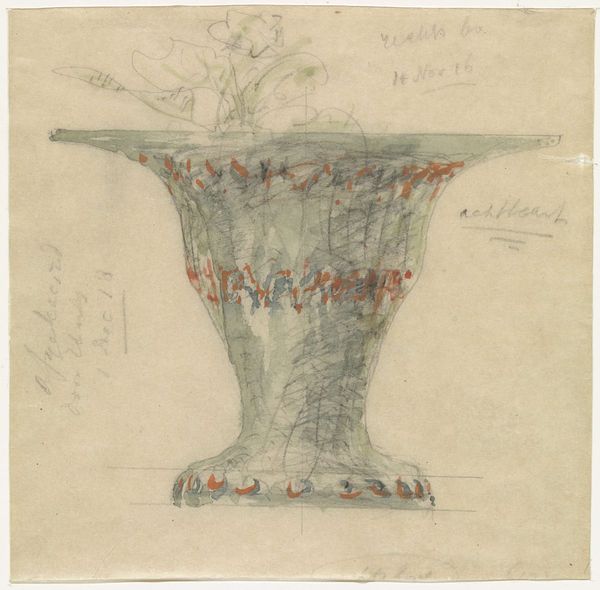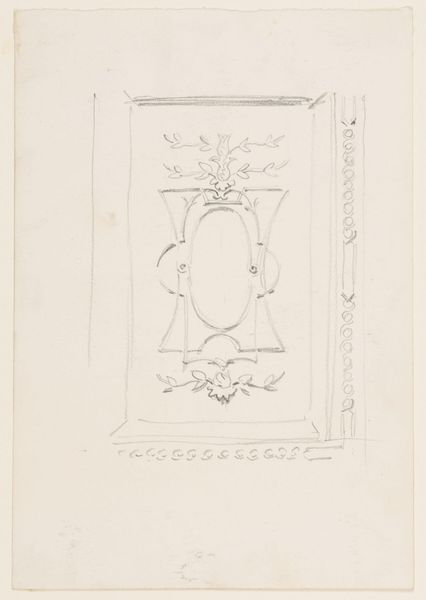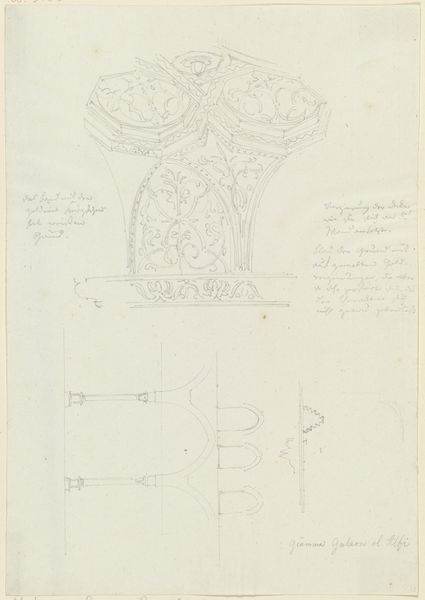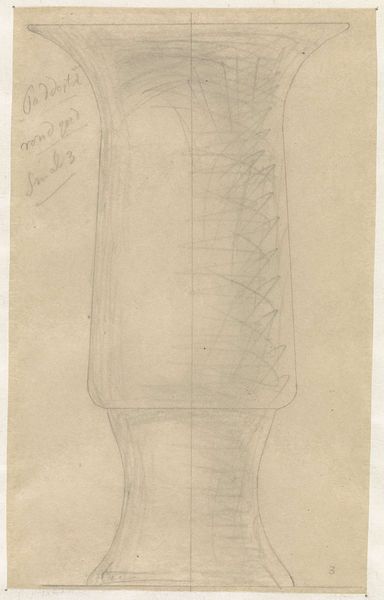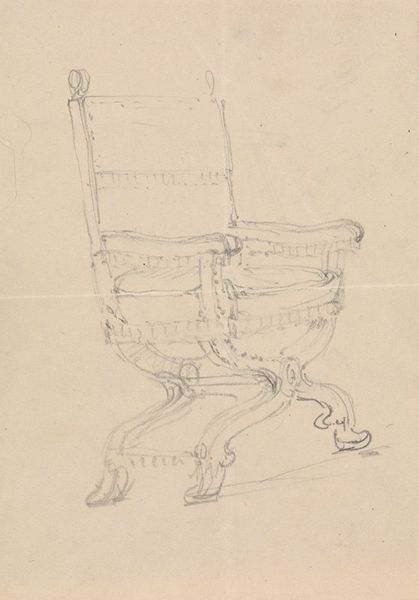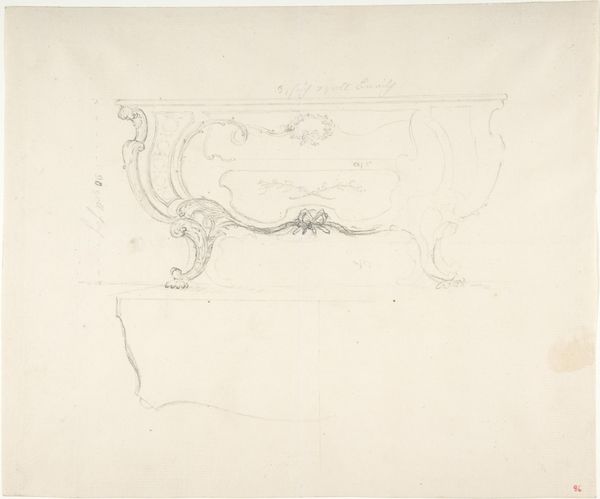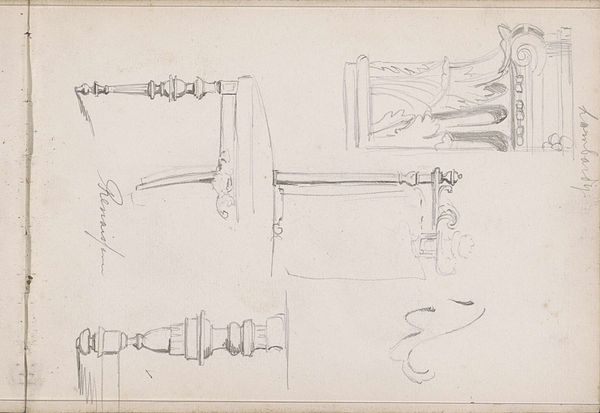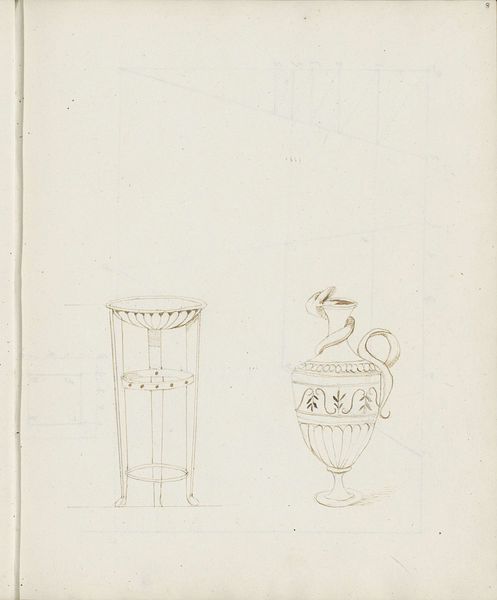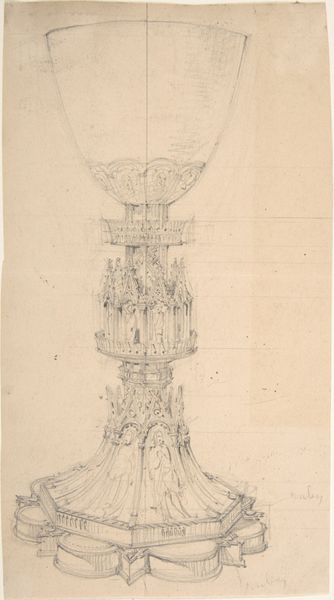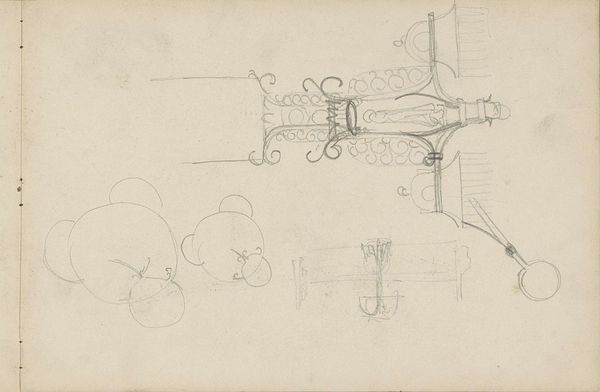
drawing, paper, pencil
#
drawing
#
amateur sketch
#
art-nouveau
#
quirky sketch
#
incomplete sketchy
#
vase
#
paper
#
personal sketchbook
#
idea generation sketch
#
sketchwork
#
character sketch
#
detailed observational sketch
#
pencil
#
sketchbook drawing
#
initial sketch
Dimensions: height 323 mm, width 185 mm
Copyright: Rijks Museum: Open Domain
Editor: Here we have Theo Colenbrander’s “Ronde en achtkantige vaas, bakje en potje,” a pencil drawing on paper, possibly from between 1916 and 1923. It feels like we’re looking into the artist’s sketchbook – a raw, almost unfinished glimpse into the design process. What strikes you about this piece? Curator: I see more than just a design sketch. It’s a document reflecting the socio-political context of its time. Consider the period: the aftermath of World War I. The Art Nouveau style, with its organic motifs and focus on craftsmanship, emerged in part as a response to industrialization. Does this drawing, with its planned, geometric forms, then suggest a grappling with the tension between handcraft and the machine age, and with the role of art as a functional, mass producible object? Editor: That's a compelling interpretation! I hadn't considered the broader historical context. Do you see any particular symbolism in the vase designs themselves? Curator: I think it's interesting to read Art Nouveau through the lens of gender. How might we consider this object as both an item of domestic display and as an assertion of feminine taste and agency in shaping the home environment? Editor: I'm also wondering about the unfinished quality of the sketch. Does it challenge traditional notions of artistic authorship and the 'finished' artwork? Curator: Exactly! It invites us to question the hierarchical structures within the art world that privilege the polished over the process, the final product over the initial idea. Colenbrander is sharing the kernel of inspiration, allowing us entry into his creative decision-making. Do you see that openness to accessibility extending to his design subjects – the everyday domestic object? Editor: Yes, definitely! I see your point. It makes me think differently about what we value in art and design. Thank you! Curator: And thank you, too. Considering art through this lens really invites reflection on broader cultural narratives and biases.
Comments
No comments
Be the first to comment and join the conversation on the ultimate creative platform.
